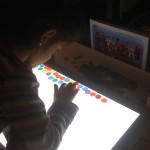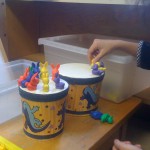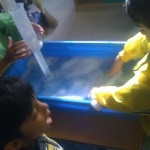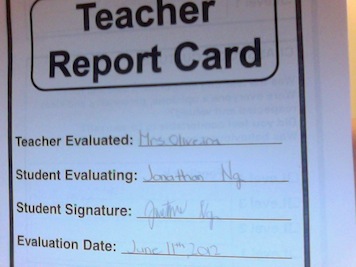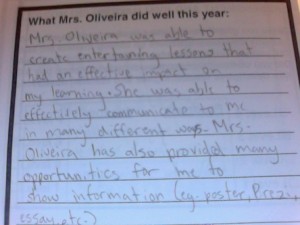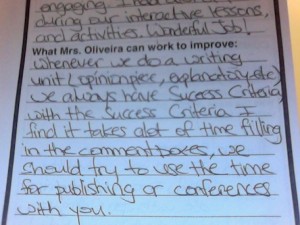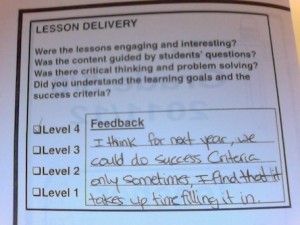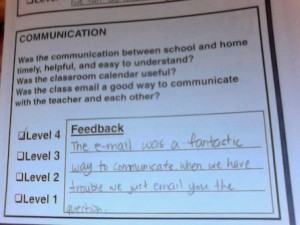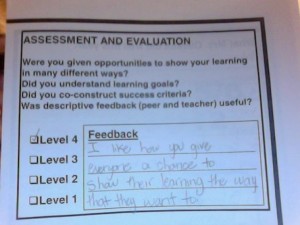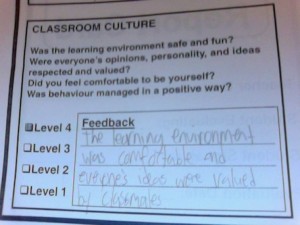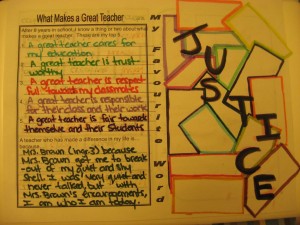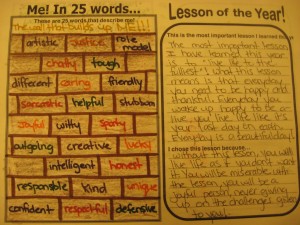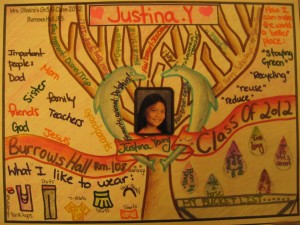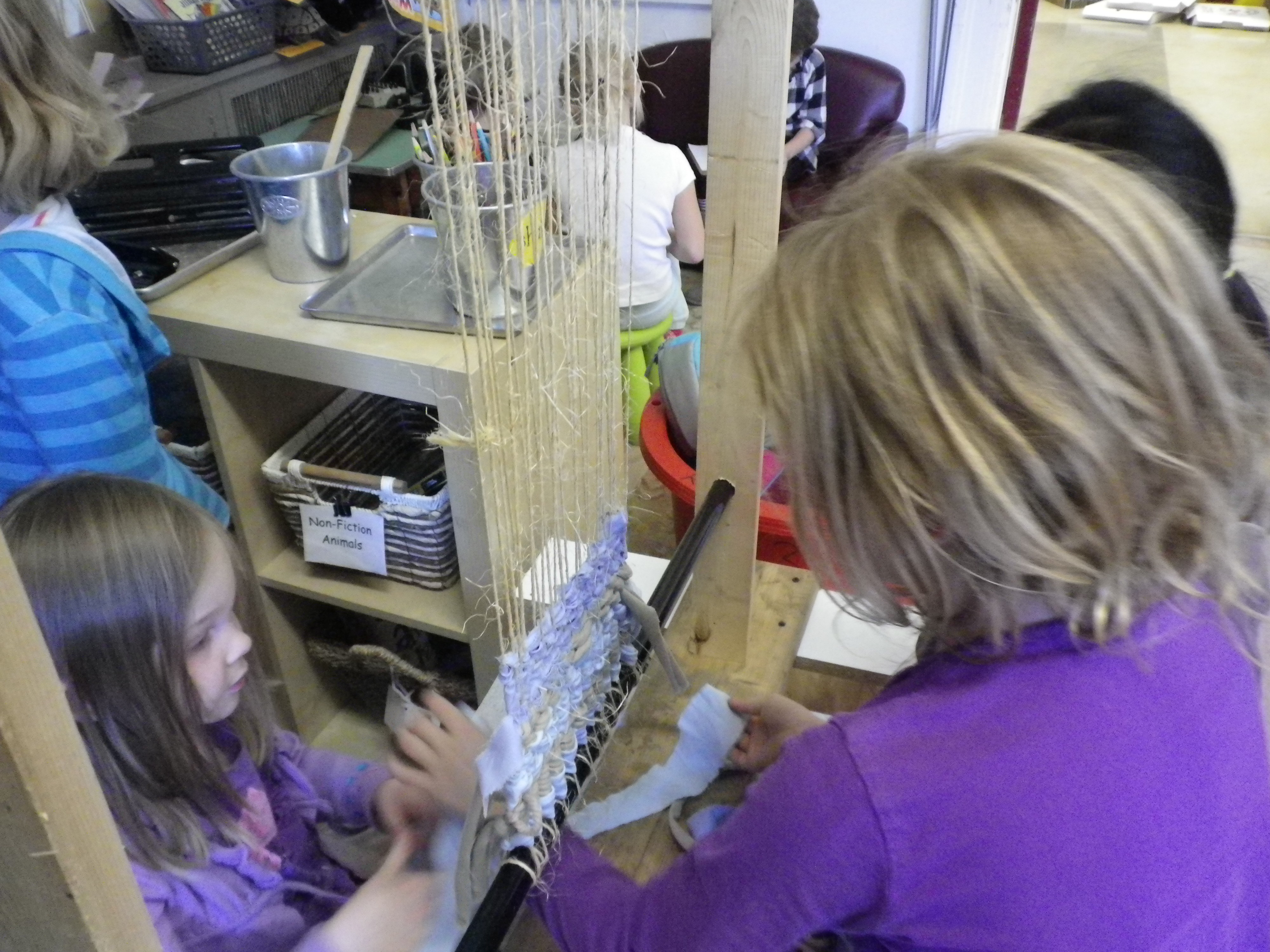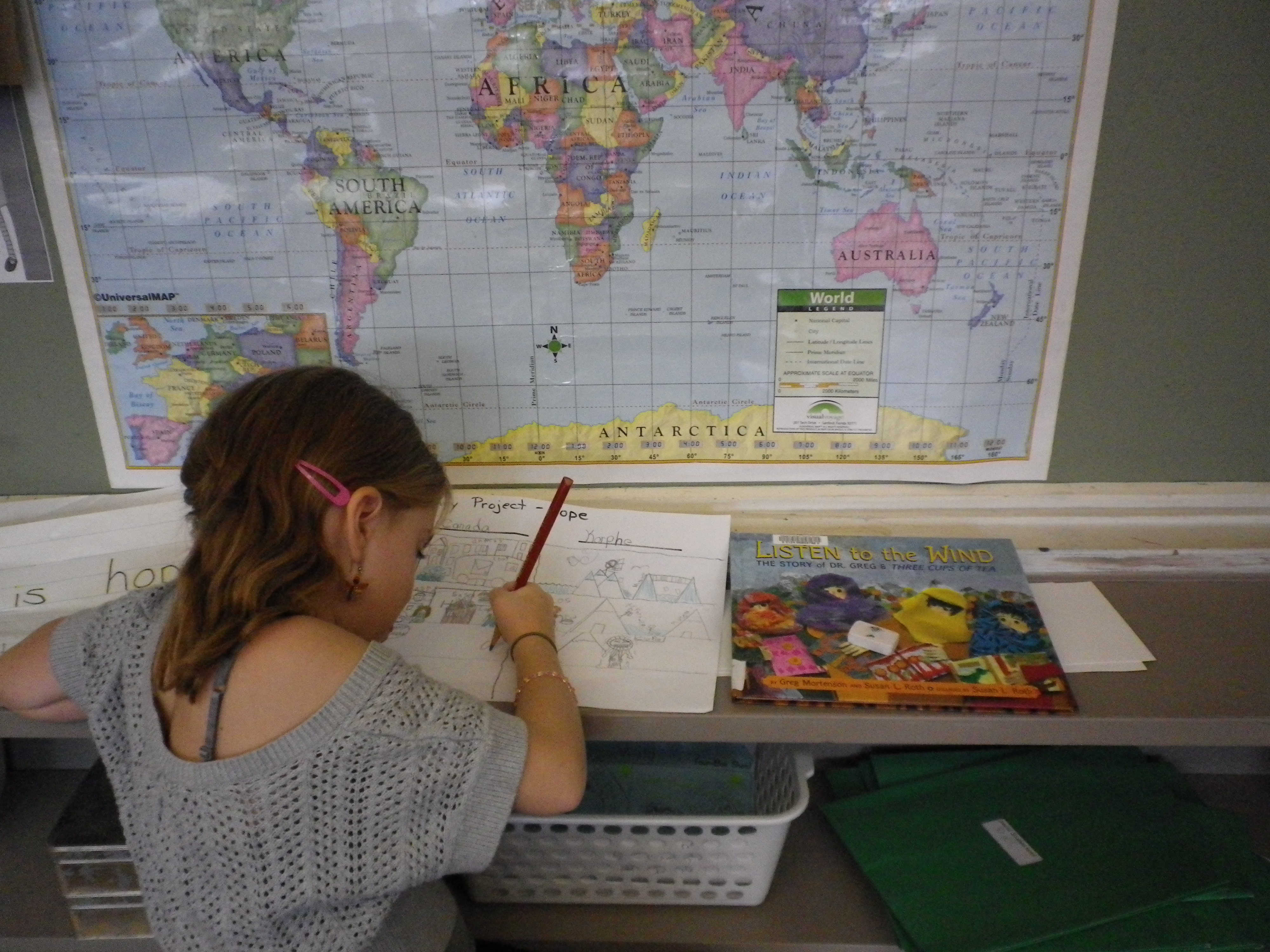Whenever I complete reports, I seem to reflect on the practice of evaluation and how to improve my assessment practices. Here is what I have noticed:
- assessment begins when you first meet your students. This provides a starting point, so you can recognize growth or progress. Initial observations may seem too obvious to record, but are often useful at time of the Progress report or the first interview with parents.
- observation charts made like a grid with the students first names in alphabetical order are my preferred format. I have tried observation notebooks (one for each student) and index cards. The grid observation chart is simple as I can copy a stack and keep on clipboards around the room for quick accessibility. It is also easy to see if a block is empty – ensuring that I am making observations equitably. I also find these observation charts useful when marking. There is enough space to provide a grade for an assignment as well as a quote or excerpt of the student’s work. I then add the sheet to my assessment binder. When writing reports, I can refer to the grade of an assignment as well as an excerpt, which I include as an example for the report – showing how the student demonstrated their understanding.
- photos are an excellent way to capture student work and refer to during report writing. I have used my smart phone to capture pictures of the students in tableaux, their writing in their notebooks, artwork, collaborative pieces, brainstorming discussions, math activities, and music (video of the students experimenting with instruments). Referring back to the photos and videos provided evidence of student engagement and understanding that I may have missed with anecdotal notes.



